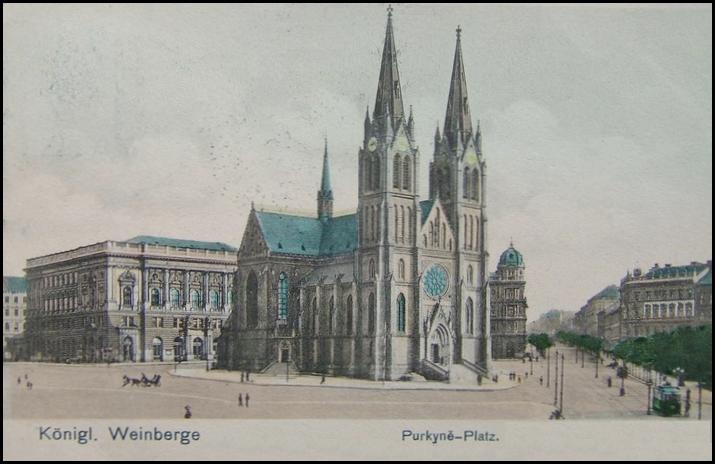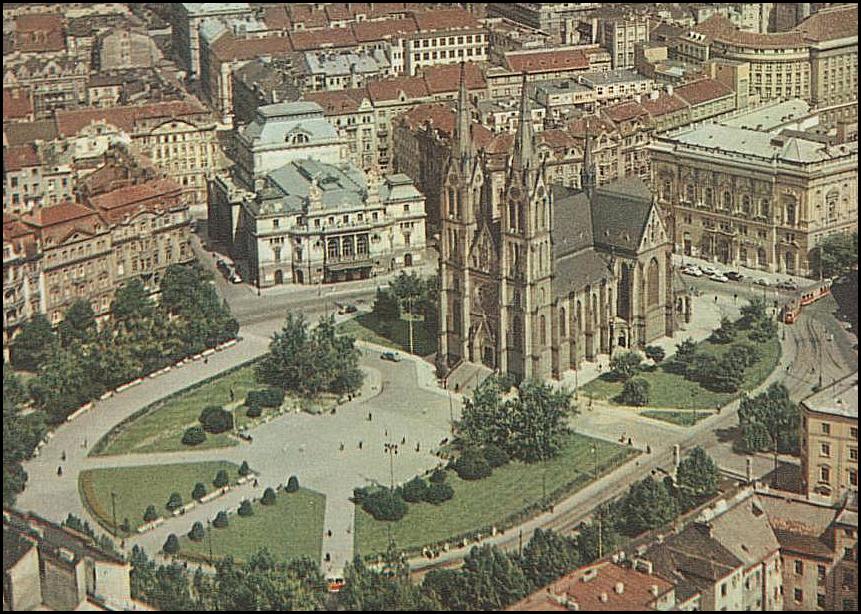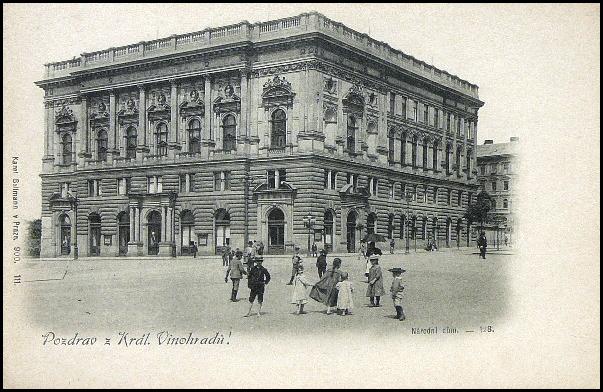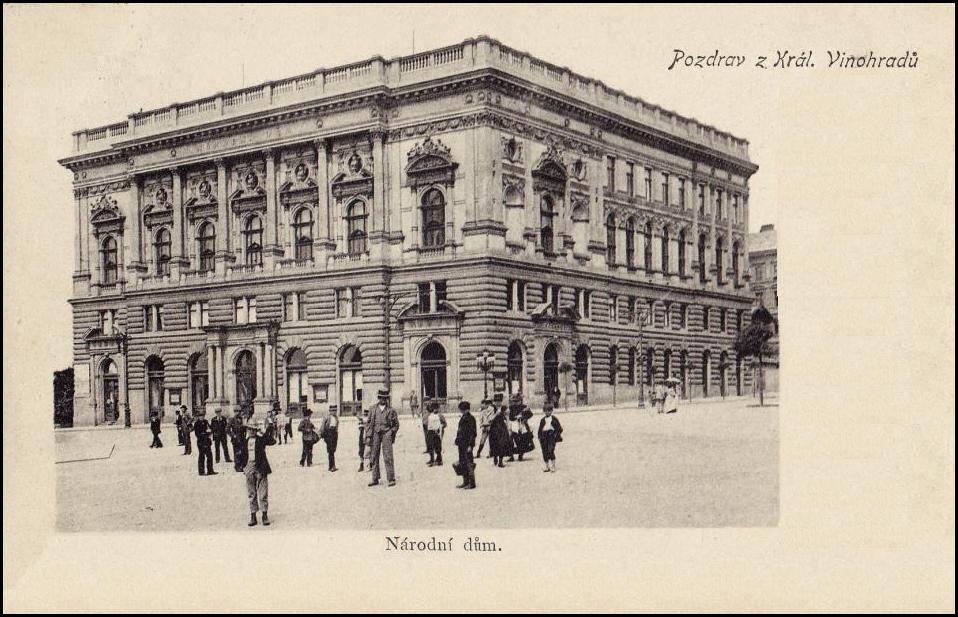HISTORY
Alongside the building of the National Theatre, National Museum and Rudolfinum, the National House of Vinohrady is a beautiful and eloquent reflection of the cultural efforts of the late nineteenth century. It is the example of national liberation efforts typical of nineteenth century society. In the nineteenth century the Czech lands were under a fourth century of Austrian rule, with increasingly intensified efforts to regain national freedom, not only in a physical form, but especially culturally.
This period was ended by the First World War. However, many years before the fall of the Austro-Hungarian Empire efforts began to revive the confidence of the Czech nation. Enthusiasts across the country hailed the importance of Czech cultural heritage – an extraordinary history, tradition, folklore, literature, art, etc. In the spirit of these efforts, there have been many ‘national’ buildings. One of them is the National House of Vinohrady.
The National House of Vinohrady is a significant part of the district of Vinohrady. The name Vinohrady in English literally means vineyards. The district of Vinohrady is situated on the territory of the former royal vineyards, which were founded in 1348 by Charles IV, Czech king and Holy Roman Emperor.
This three-winged structure was built in the Neo-Renaissance style popular at that time. The concept is in the spirit of the national liberation mood, and an uncompromising emphasis on the cultural heritage of the Czech nation – its artists and history. A specific feature of the National House is its main concept – a celebration of Vinohrady district.
Construction of the National House of Vinohrady was decided on by city councillors in the early 1890s. They chose an empty plot of land for the planned construction. There was a footpath lined with cherry trees and a high hedge passing through which lead to the vineyards. The plot is between what later became the streets of Korunní, Slezská and Blanická. City architect Antonín Turek was appointed to the project to create a large ceremonial building in the Neo-Renaissance style. He was also the creator of Vinohrady waterworks and market.
The National House is a four-storey building with three large ceremonial halls, four lounges and a number of office and retail spaces. The combination of all three main halls creates a whole capable of accommodating over 1,200 visitors, which the National House of Vinohrady uses when organizing large cultural and social events, and is one of the largest ceremonial buildings in Prague.
The largest and most beautiful hall of the National House of Vinohrady is Mayakovsky Hall, which is over 500 m2 and can accommodate 750 visitors. The Hall is named after the Russian poet Vladimir Mayakovsky, who in 1927 recited his work there. The poet’s performances apparently attracted audiences big enough to fill the halls to their limits. The main idea behind the decoration of Mayakovsky Hall is a celebration of Vinohrady district and a celebration of Czech patriotism and culture.
Rais Hall is named after another important person from the time. Czech writer Karel Václav Rais not only lived in Vinohrady, but he was also headmaster of a nearby school. The decoration of the foyer of Rais Hall (formerly called Theatre Hall) follows the palatial splendour of Mayakovsky Hall, whereas the Hall itself is conceived in an entirely different spirit. Artistically it still remains in the Neo-Renaissance, but the decor is quite different from other halls because it was built for theatre and film performances and so was used by theatre companies, orchestras and bands.
The Social Hall arose later and was rebuilt from the original winter garden; as a result has a unique and technically interesting glass ceiling. It is the smallest of the three main halls, making it ideal for smaller-scale events. Its personality is no different from Rais and Mayakovsky Halls. The decoration remains in the spirit of nineteenth-century historicism, but the decorative heads on the arcades along the walls reflected the first tentative signs of Art Nouveau.
From the very beginning the National House of Vinohrady was the centre of social life in Prague. This great building of nearly forty rooms, with a winter and summer garden, and a renowned restaurant, was nicknamed ‘Vinohrady town salon’. The Czech Philharmonic Orchestra from the National Theatre and other leading artists frequently performed in the halls of the National House, so it soon became a cultural centre not only for Vinohrady, but the whole of greater Prague. In 1899, the National House became very important in the history of Czech cinema. Photographer and Czech cinema pioneer Jan Kříženecký projected his first and most successful ‘moving pictures’. Five years later he was followed by the famous Viktor Ponrepo, who screened his films at the National House before founding Prague’s first cinema in Karlova street.

Currently, the National House of Vinohrady is listed as a National Cultural Monument and is owned by the Ministry of Culture of the Czech Republic. Since 1994 the National House have been managed by a private company called Národní dům – KDŽ, s.r.o., which is owned by Mr. Nekola and his family.
Many people connect the National House to their memories of dance courses, proms or major corporate and private events. Development of tourism in Prague is bringing new visitors to the National House, as participants in international conferences, exhibitions and seminars. The building provides a distinguished environment for the headquarters of major companies and organizations which provide insurance, consulting and legal services, as well as educational activities. It also has a fitness centre and restaurant. The National House of Vinohrady is also a popular location for filmmakers. For example, the epic La Mome (the life of Edith Piaf) was filmed here, and our special guests include James Bond actor Pierce Brosnan, who filmed a commercial here.
High quality technical equipment (video and audio equipment, high-speed internet, Wi-Fi) and complete support services complement the beautiful historic surroundings. The National House of Vinohrady is no longer just a centre of Vinohrady, as was the case in the past; it has become an equal competitor with all the major cultural and social facilities in Prague.






